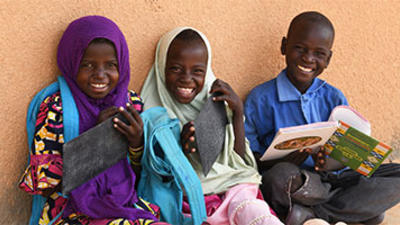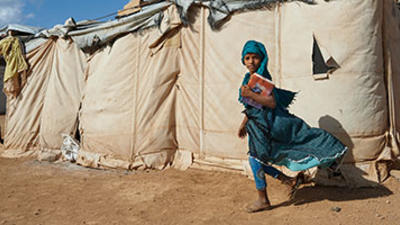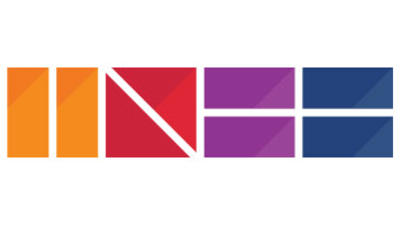Resources
Request support on coordination, information management, capacity development or other education in emergencies areas.
Demande de soutien en coordination, gestion de l’information, développement des capacités et autres domaines de l'éducation en situation d'urgence.
لطلب الدعم في مجال التنسيق ، إدارة المعلومات ، تنمية القدرات أو في اي مجال من مجالات التعليم في مناطق الطوارئ
Solicitar apoyo en coordinación, gestión de la información, desarrollo de capacidades u otra áreas en educación en emergencias.
Featured Resources
below you can find selected tools

COVID-19 Resources
View resources to support education in emergencies coordination during the COVID-19 pandemic.

Guidance on Education Cluster Co-Leadership Arrangements at the Country Level
Indicative Guidance for the establishment and management of co-leadership arrangements at the country level.

Inter-agency Network for Education in Emergencies
For technical education in emergencies resources, please visit the INEE website.
Kenya Education Cluster Education in Emergencies Comprehensive Assessment Tool
The purpose of this tool is to collect information on the effects of disasters (armed conflicts, drought, fire, floods, winds, landslides, human wildlife conflicts, etc.) on the provision of education services in affected areas. The information gathered will enable stakeholders to formulate…
- Coordination: Needs Assessment
- Emergency: Conflict, Drought, Floods
- HPC: Needs Assessment & Analysis
Joint Education Needs Assessment: Rohingya Refugee in Cox’s Bazar
The largest influx of Rohingya refugees into Bangladesh began on August 25th2017. Nearly 1 million now reside in Cox Bazar district. 0ver 500,000 children in the district are in need of EiE assistance.Approximately 375,000 of them are Rohingya And remain almost solely reliant on international and…
- Coordination: Needs Assessment
- Emergency: Floods, Displacement
- HPC: Needs Assessment & Analysis
Guide to Education in Emergencies Needs Assessments
The purpose of the Guide and Needs Assessment Packages to provide practical, relevant guidance and resources to education in emergencies (EiE) coordination staff conducting, coordinating and participating in secondary data reviews and joint, harmonized and/or multi-sector needs assessments.
- Coordination: Needs Assessment, Inter-Sector Coordination
- HPC: Needs Assessment & Analysis
- Technical Areas: Accountability to Affected Populaiton, Localisation
Education Cluster Assessment Framework Template
Key decisions, deadlines and information needs should be recorded into an assessment framework. The framework is a guiding document for the entire assessment process and helps ensure that data for every question has a specific purpose for being collected (as well as a plan for how to analyze it…
- Coordination: Needs Assessment
- HPC: Needs Assessment & Analysis
- Coordination: Needs Assessment
- HPC: Needs Assessment & Analysis
Participatory Sessions with Children - Template
"Conducting KIIs or FGDs with children and/or young people should be quite different than KIIs or FGDs with adults; they should be age-appropriate. Use art, drawing, theatre and other similar activities to allow the children to express issues and concerns in a safe and non-distressing manner.…
- Coordination: Needs Assessment
- HPC: Needs Assessment & Analysis
- Technical Areas: Accountability to Affected Populaiton
Participatory Approaches
Using participatory approaches in impact evaluationmeans involving stakeholders, particularly the participants in a programme or those affected by a given policy, in specific aspects of the evaluation process. The term covers a wide range of different types of participation, which differ in terms…
- Coordination: Coordination, Needs Assessment
- HPC: Needs Assessment & Analysis
- Technical Areas: Accountability to Affected Populaiton
Mali Education Cluster - Magpi Mobile Data Collection Lessons Learned
In August 2014 the Mali Education Cluster conducted a sector needs assessment in Mali’s Kidal region using Mapi. This report contains lessons from this assessment.
- Coordination: Needs Assessment, Information Management, Knowledge Mangement
- Emergency: Conflict
- HPC: Needs Assessment & Analysis
Liberia Needs Assessment Budget
Liberia Education Cluster's Budget for their Joint Education Needs Assessment 2014
- Coordination: Needs Assessment
- Emergency: Epidemic
- HPC: Needs Assessment & Analysis
DHNetwork Presentation
Global Education Cluster webinar on the Digital Humanitarian Network and potential areas to support country clusters.
- Coordination: Needs Assessment, Information Management
- HPC: Implementation & Monitoring, Needs Assessment & Analysis
Filter results
Coordination(selected )
Country(selected )
Emergency(selected )
Humanitarian Programme Cycle(selected )
Language(selected )
Publication Date(selected )
Publisher(selected )
Resource Type(selected )
Technical Areas(selected )
Can’t find what you’re looking for?
Contact your relevant language Help Desk










